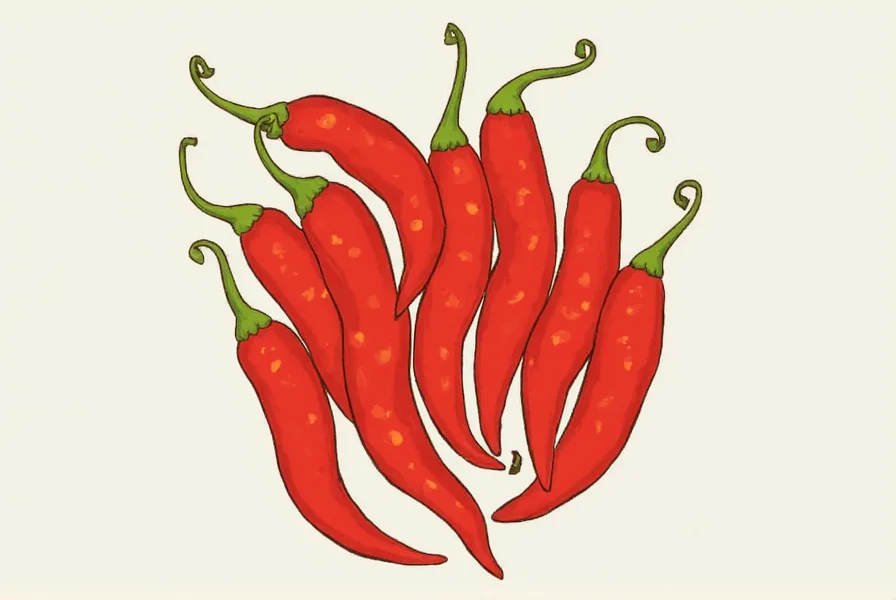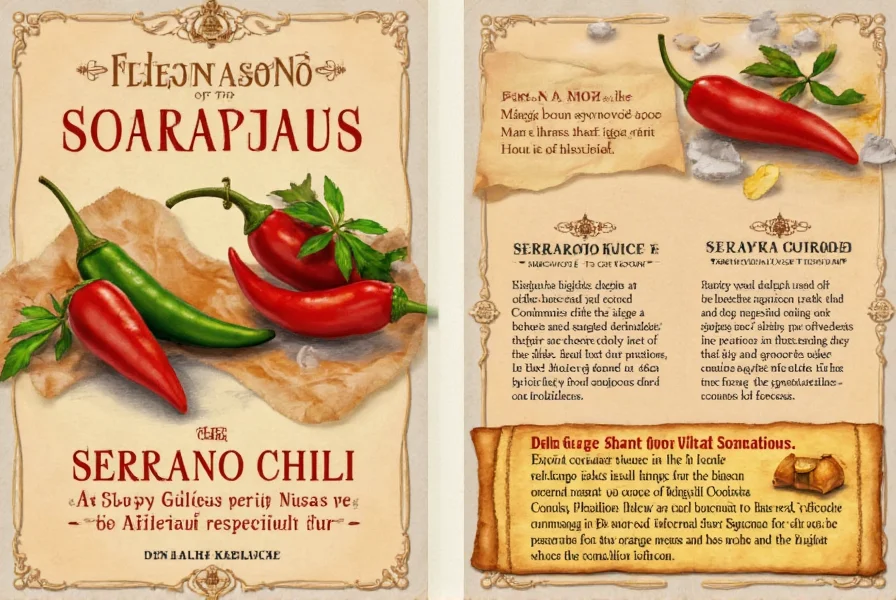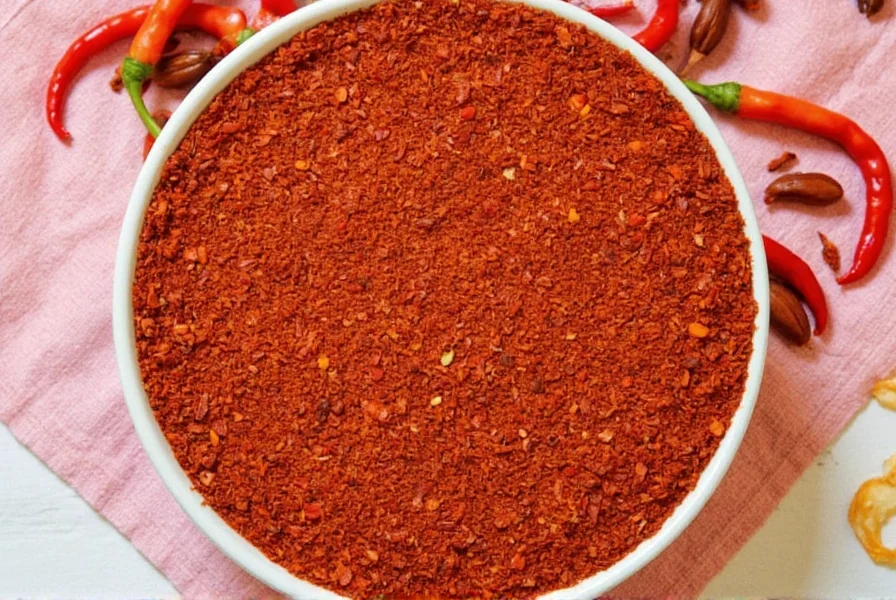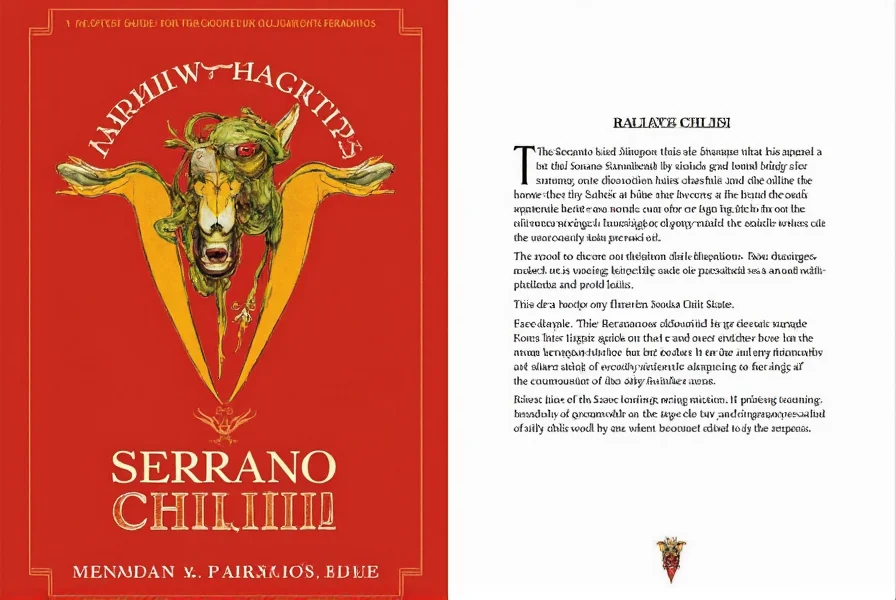Introduction to Serrano Chilies
Serrano chilies (Capsicum annuum) are a versatile, moderately hot pepper ranging from 1,000 to 25,000 Scoville Heat Units—typically 2-10x hotter than jalapeños. Originating in Mexico, they're prized for their bright green color (unripe) and vibrant red (ripe), with a crisp texture and clean, peppery flavor that enhances salsas, marinades, and stir-fries without overwhelming dishes. Unlike milder poblanos or extremely hot habaneros, serranos offer a balanced heat profile ideal for home cooks seeking authentic spice.
Table of Contents
Practical Tips for Handling Serrano Chilies
Always prioritize safety when working with serranos. Capsaicin oils can cause severe skin irritation and eye burns. Follow these essential steps:
- Wear food-safe gloves during preparation to prevent capsaicin transfer
- Never touch your face while handling chilies—especially eyes and nose
- Use a spoon to remove seeds/membranes instead of fingers
- Rinse hands with cold water and soap after handling (hot water spreads oils)
- Work in ventilated space to avoid airborne irritation from chopping

Cooking Uses of Serrano Chilies
From fresh salsas to complex sauces, serranos deliver consistent heat and flavor. Key applications:
- Authentic Mexican salsas: Finely diced serranos provide clean heat without overpowering
- Guacamole enhancement: 1-2 minced serranos add perfect spice to avocado base
- Marinades for meats: Blend with lime, garlic, and cumin for tenderizing effect
- Stir-fry boost: Thinly sliced serranos add quick heat to Asian-inspired dishes
- Homemade hot sauce: Ferment with vinegar and garlic for shelf-stable condiment

Buying Guide: How to Choose the Best Serrano Chilies
Key Selection Criteria
- Freshness indicators: Firm texture, glossy skin, no soft spots or wrinkles
- Color choice: Green (milder, grassier flavor) vs. Red (riper, sweeter, hotter)
- Size considerations: Smaller chilies (1-2 inches) often have concentrated heat
Form Comparison
| Form | Best Use Cases | Storage Duration |
|---|---|---|
| Fresh | Raw salsas, garnishes, quick-cooking dishes | 2-3 weeks refrigerated |
| Dried | Stews, soups, spice blends | 6-12 months airtight container |
| Powdered | Quick seasoning, rubs, baked goods | 6 months cool/dark place |
Serrano vs. Other Common Chilies: Heat & Flavor Comparison
| Chili Type | Scoville Range | Flavor Profile | Best For |
|---|---|---|---|
| Serrano | 1,000-25,000 | Crisp, peppery, clean finish | Salsas, marinades, stir-fries |
| Jalapeño | 2,500-8,000 | Grassy, mild sweetness | Quesadillas, pickling, stuffed peppers |
| Habanero | 100,000-350,000 | Fruity, smoky, intense heat | Hot sauces, Caribbean dishes |
| Chipotle | 1,000-8,000 | Smoky, earthy depth | Barbecue sauces, stews |
| Poblano | 1,000-1,500 | Mild, nutty, earthy | Chiles rellenos, mole sauces |

Frequently Asked Questions
How much hotter are serranos than jalapeños?
Serranos are typically 2-10x hotter than jalapeños. While jalapeños range 2,500-8,000 Scoville units, serranos span 1,000-25,000. The thinner walls of serranos concentrate heat, so even small amounts significantly increase spiciness. For substitution, use half the quantity of serranos compared to jalapeños.
How to store fresh serrano chilies long-term?
Store unwashed serranos in a paper bag in the refrigerator crisper drawer for 2-3 weeks. For longer storage:
- Freeze whole in freezer bags (lasts 6 months; chop while frozen)
- Dry thoroughly and store in airtight container (up to 1 year)
- Make hot sauce for shelf-stable preservation
Why do my hands burn after handling serranos?
Capsaicin oil causes burning by binding to pain receptors. Prevention:
- Always wear gloves during preparation
- Rinse hands with cold water and soap immediately after handling
- Use milk or yogurt to neutralize residual heat (dairy binds capsaicin)
Green vs. red serranos: What's the difference?
Green serranos are unripe with brighter, grassier flavor and slightly lower heat (1,000-15,000 SHU). Red serranos are fully ripe with sweeter, fruitier notes and higher heat (15,000-25,000 SHU). Red varieties also contain more antioxidants. Choose green for fresh salsas and red for cooked sauces where sweetness develops.
Are serrano chilies healthy?
Yes! A single serrano provides 90% of daily vitamin C and is rich in vitamins A, potassium, and antioxidants. Capsaicin has proven benefits:
- Boosts metabolism and fat burning
- Reduces inflammation and pain
- Supports heart health
Conclusion
Serrano chilies deliver the perfect balance of heat and flavor for home cooks seeking authentic spice. From their crisp texture in fresh salsas to their smoky depth in slow-cooked sauces, these versatile peppers elevate dishes without overwhelming them. Remember: always wear gloves when handling, choose green for milder heat or red for sweeter intensity, and store properly to maximize freshness. With this guide, you're now equipped to confidently incorporate serranos into every meal.











 浙公网安备
33010002000092号
浙公网安备
33010002000092号 浙B2-20120091-4
浙B2-20120091-4